Are you looking for a way to revive your lawn? Do you want a green lawn all year round? Overseeding might just be the solution. Planting new seeds on top of an existing lawn is a pathway to a greener, healthier lawn without the added expenses.
If you want to reseed and you don’t know which seed to choose, we get it. A lot of thought goes into choosing a suitable overseed. Using the wrong grass variety is a big waste of money, and you will not get the results you want for your lawn.
We wrote this guide to help you choose the best grass seed for overseeding. We’ll explain the factors you need to consider, how to overseed, and suggest the best overseed for your type of lawn. After reading this article, you will know exactly which grass seed variety you need to overseed your lawn like a pro.
So, let’s get started.
The Benefits of Overseeding
Before we find out what the best grass seed for overseeding is, let’s look at some of the advantages of planting new grass seeds on an existing lawn.
Mend a thinning lawn
No one wants bare, brown patches on their lawn. Suppose your lawn doesn’t have any other problems such as iron deficiency or a disease/weed infestation.
In that case, overseeding can help fill those bare spots and green your turf without the need for additional fertilizer or supplements. As long as you overseed the right grass seed under the right conditions, you should enjoy a thick, lush lawn in a matter of a few weeks.
Keep weeds away
Lawn weed will thrive anywhere there is a bare spot on your lawn. Not only are weeds an eyesore, but they also compete with healthy grass for nutrients.
In a short time, these unwanted plants can multiply and crowd out the grass or deprive the grass of nutrients, leading to an undesirable brown and crispy yard. With overseeding, you can quickly fill bare spots, keeping weeds from taking over your turf.
Minimize erosion
A thin lawn exposes the soil to wind and rain. Prolonged exposure can result in severe erosion, making your lawn less stable and leaving the soil without nutrients to support plant life.
If you do not take early action, erosion can quickly render your lawn unsuitable for any plant growth. Slow down the effects of erosion by planting grass as soon as you notice thinning or when the lawn goes dormant.
Curb Appeal
Do you cringe when the seasons change and your lawn goes dormant? You can enjoy a green turf all year round if you overseed using the right grass seed for your particular climate.
If you live in the North, where cold-season grass thrives, your lawn may go dormant in summer. To maintain a green summer lawn, you can overseed using warm-season grass seeds.
Alternatively, if you live in the warmer South, overseed with cold-season grass in fall to ensure that your lawn stays green in winter.
The Best Grass Seed for Overseeding
Below are our top choices for the best grass seed for overseeding.
1. Use the existing variety
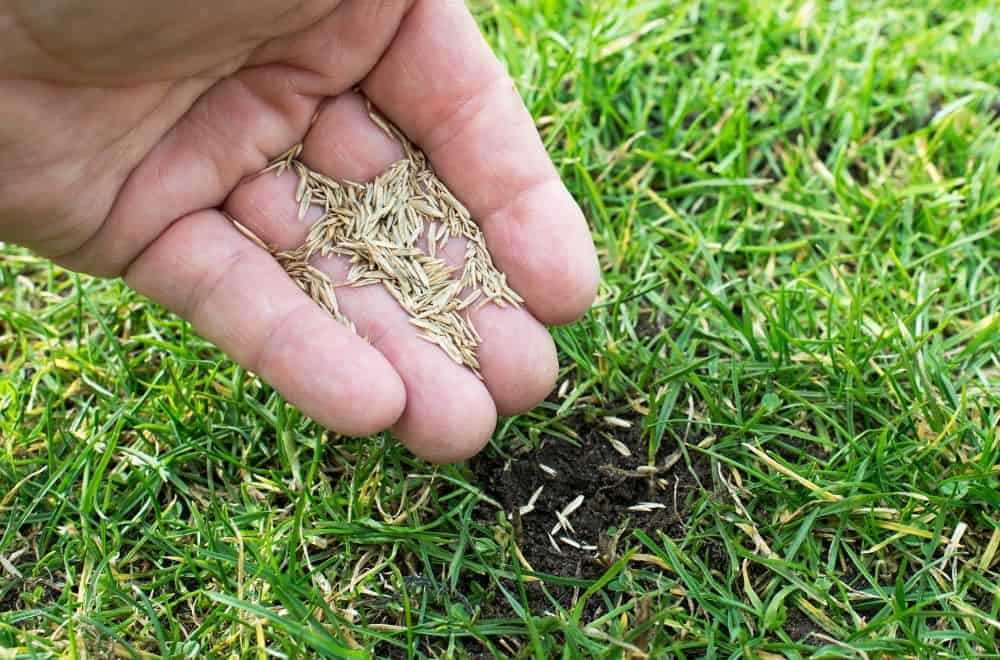
If the current grass variety in your lawn is generally doing well, it might be the best grass seed for overseeding. Unless the grass has problems such as disease, weeds, is prone to browning, and or has issues with iron deficiency, there might be no need to change to a different grass variety. This is especially true if you simply want to overseed your lawn due to natural wear and tear and nothing more.
2. Bermudagrass
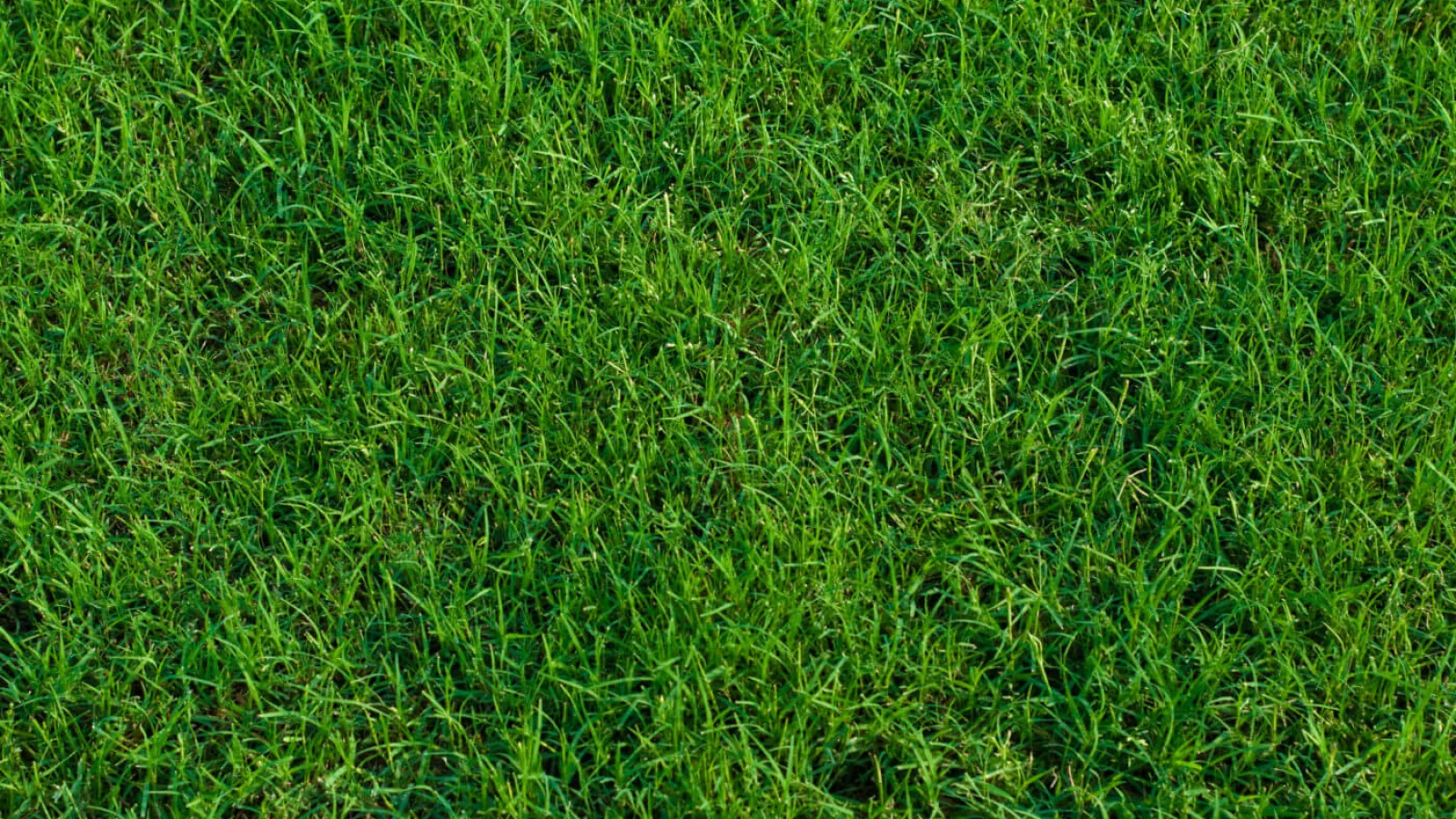
Image Credit: turfmasterslawncare
Bermudagrass is a popular warm-season grass that thrives in the southern area. This grass seed germinates into dense, lush, medium green grass that can tolerate salt and drought. Bermudagrass is a good choice for overseeding because it establishes fast and can edge out most types of weeds.
Some newer cold-tolerant Bermudagrass varieties are now available, allowing homeowners further up North and those in the transition zone to maintain a relatively green lawn in the colder months.
The only downside is that Bermudagrass requires quite a bit of maintenance and care to ensure a healthy lawn overall. But, for all your efforts, you will be rewarded with a hard-wearing, steadfast, and fine-textured turf.
3. Zoysia Grass
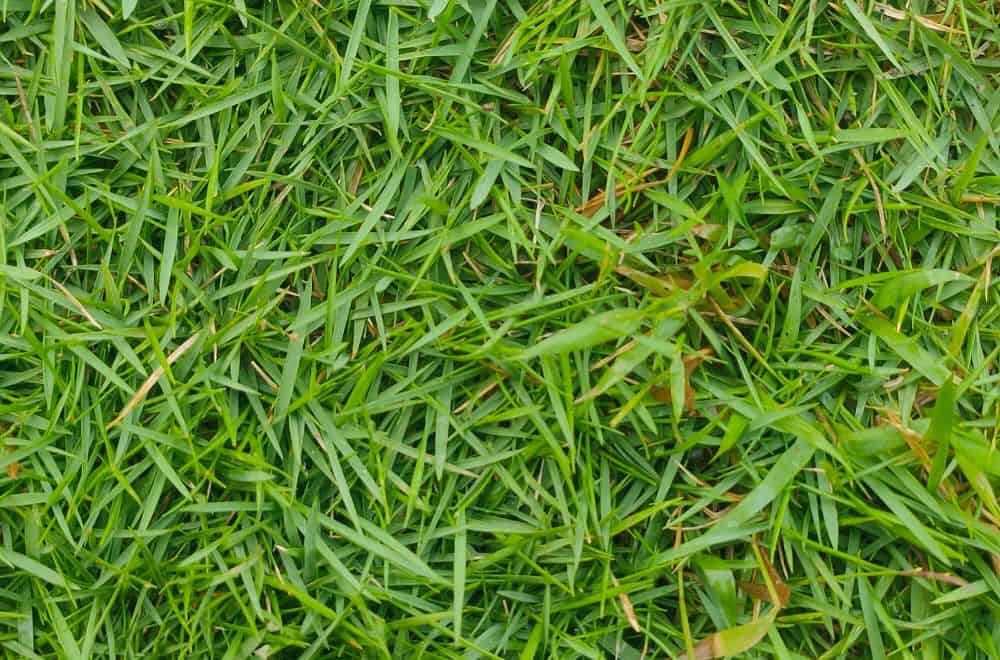
Zoysia is another warm-season grass and is a top choice for overseeding winter lawns and any lawns that sustain heavy traffic. The grass has strong aboveground stolons and underground rhizomes that help to form a dense and thick carpet-like lawn that can sustain prolonged use and abuse.
The dense nature of Zoysia also keeps stubborn weeds from sprouting in the lawn. The grass stays medium green in a warmer climate and turns crispy brown in the colder months. Compared to other popular warm-season grasses, including Bermuda, Zoysia stays greener for longer and blooms the earliest when spring comes around.
Zoysia can be high maintenance in terms of mowing and general lawn care. However, the turf is heat and drought-resistant, and it will remain green even under the scorching summer sun. Light shade, adequate water, and enough sun exposure are all that Zoysia grass seeds need to grow into a mature, healthy lawn.
4. Perennial Rye Grass
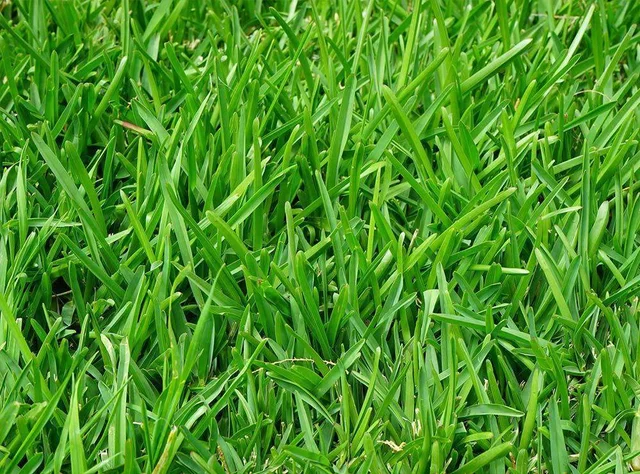
Image Credit: durangonursery
Perennial ryegrass is the best cool-season grass for overseeding a southern turf. This grass does really well in climates where winters are cool, and summers are mild. Lawn owners in much of the Southern regions opt for perennial ryegrass to give color to the lawn in winter when warm-season grasses turn brown.
Also, perennial ryegrass has an impressively fast germination rate than any other cold-season grass. When you overseed using ryegrass, the seeds will start to sprout as early as 3 to 5 days. The grass establishes equally fast but spreads slowly because it grows in clusters and uses slow-spreading vertical tillers to cover an overseeded area.
5. Kentucky Blue Grass
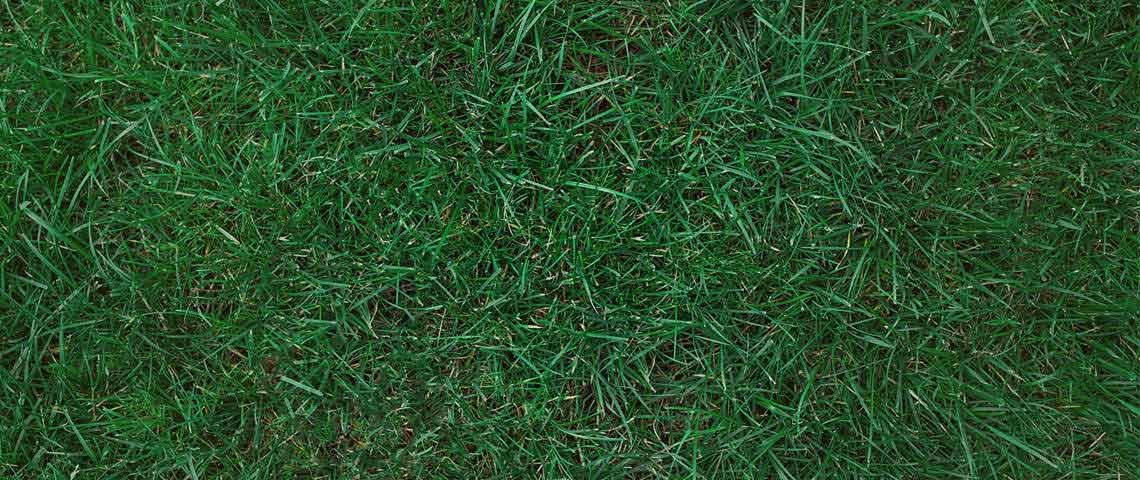
Image Credit: pennington
Kentucky bluegrass is among the most popular cool-season grasses. You can overseed a southern lawn using bluegrass to retain winter color.
One of the best qualities of Kentucky bluegrass is that it spreads fast, and it is self-healing. The grass has strong underground rhizomes that spread rapidly and help to form a dense carpet-like turf.
This grass variety is also the most cold-tolerant compared to other cool-season grasses. It can tolerate freezing temperatures that would otherwise damage other cool-season grasses, including perennial ryegrass and fescue. Kentucky bluegrass is also highly disease and drought-resistant, and stands up to wear and tear.
That said, it is important to give your bluegrass enough care. Without this, your lawn can quickly go dormant when the temperatures fall low despite the grass being a cool-season variety.
6. Tall Fescue
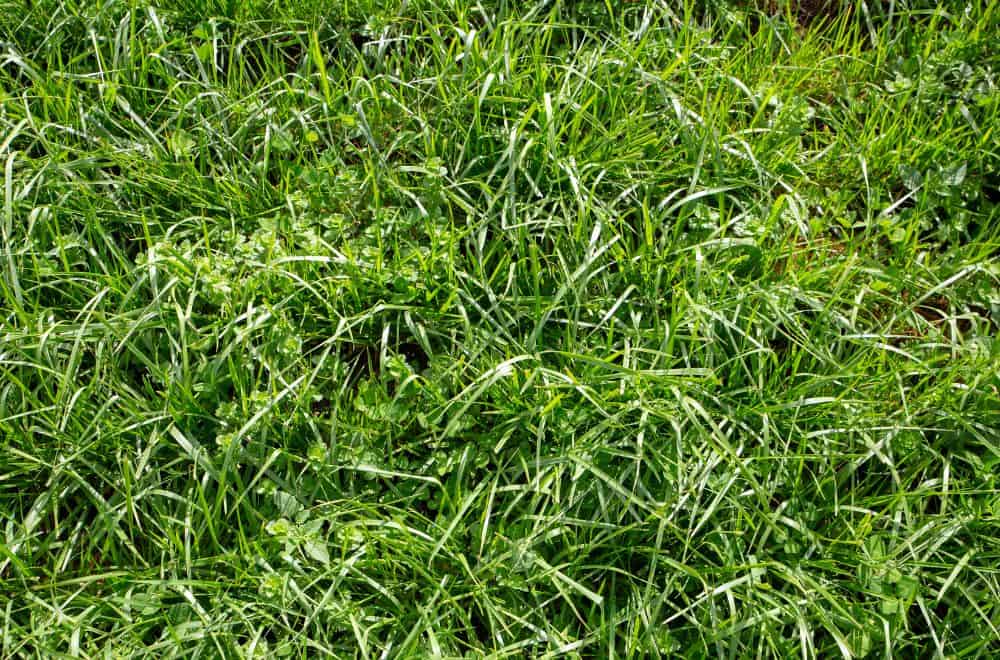
Another type of grass you can use for overseeding a southern lawn in winter is the tall fescue. This grass variety turns green in mid-spring and remains a medium to dark green color late into the fall and early winter when a southern lawn would usually go dormant.
Of all the cool-season grasses, tall fescue is the most tolerant to drought, traffic, and heat. It thrives in partially shaded lawns and is the best choice if you are keen on a low-maintenance lawn during the cold season.
When To Overseed Your Lawn
When to overseed your lawn is as important as the type of grass seed to use. I will get straight to the point and say that early fall is the best time to overseed your lawn.
At this time, the soil and day temperatures are still adequately warm to support germination. There is also a soft, predictable downpour, and the weeds aren’t sprouting at this time to compete with the new grass.
That said, you should still consider your area’s climate. For lawn owners in the South, it is best to overseed between late spring and midsummer.
This period offers ideal temperatures for warm-season grasses, which thrive in warmer soil. Generally, it would help if you tried to reseed your lawn between late summer and early fall for the best results.
How Much Grass Seed Do You Need For Overseeding?
Another important factor to keep in mind when you plan to overseed your lawn is the amount of grass seed to use. The right amount of seed will ensure full coverage and a thick lawn. The quantity will depend on the size of the area you want to overseed and the type of grass seed.
Generally, for hard-wearing grass seeds, you will need 1kg per 100 square meters and about 4 kg per 100 meters for finer grass seed varieties such as tall fescue. Check out this explainer on how much grass seed you need in your lawn.
Overseeding Keeps Your Lawn Green All Year Round
Regular care and maintenance are essential for a healthy lawn. One of the best ways to care for your yard is to overseed it using the correct grass seeds.
As you have seen, the best grass seed for overseeding will depend on what you want to achieve in your lawn. Some grass varieties are best for cooler climates vs. warmer climates, while others are a good choice for slowing down erosion or filling a thinning but otherwise healthy lawn.
Before going out to buy seed, be sure to keep in mind crucial factors such as your lawn care goals, the area’s climate, and the amount of time and resources, you are willing to care for your chosen grass variety.
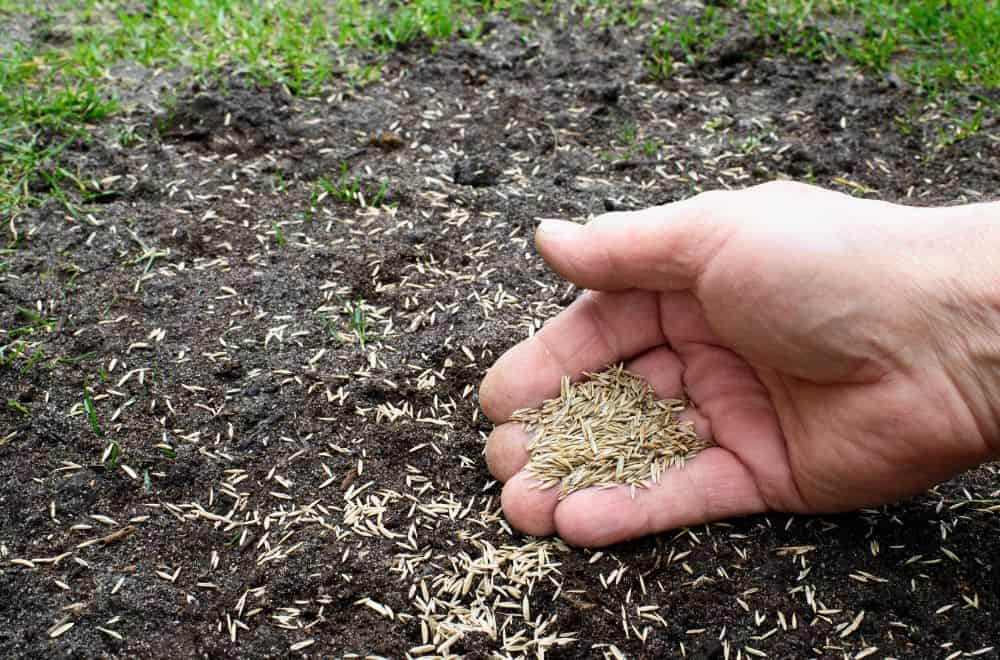
Leave a comment